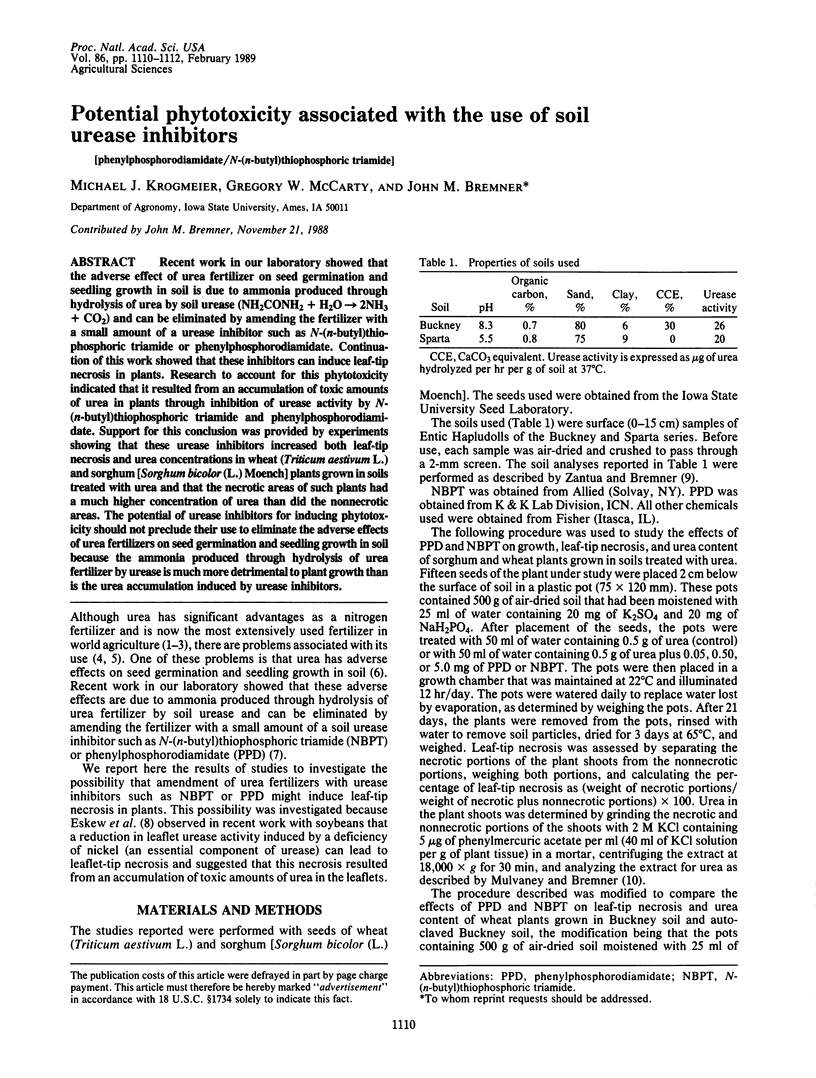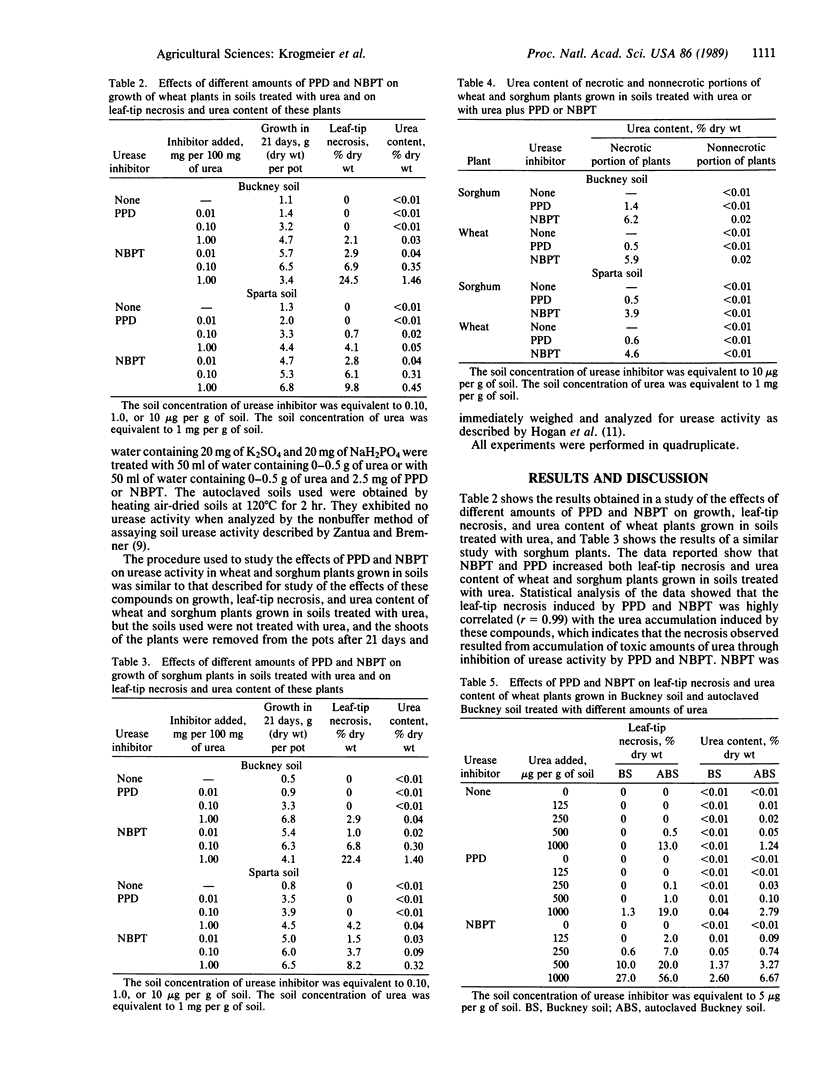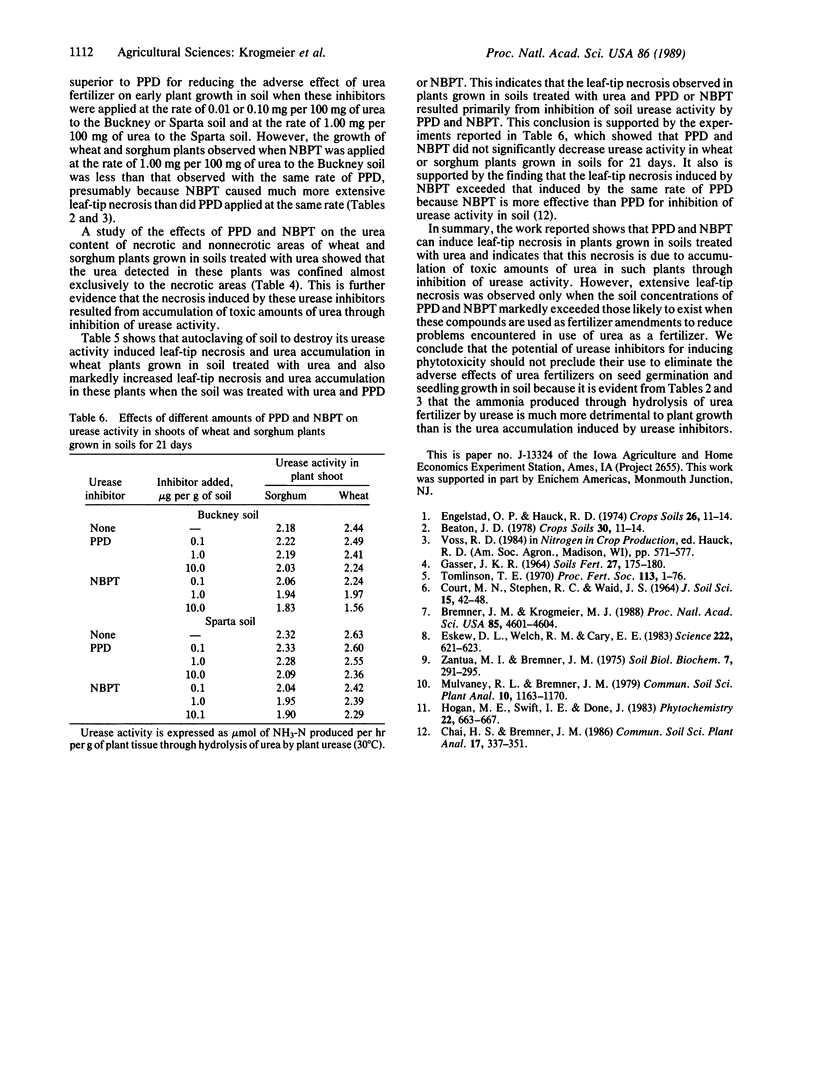Abstract
Recent work in our laboratory showed that the adverse effect of urea fertilizer on seed germination and seedling growth in soil is due to ammonia produced through hydrolysis of urea by soil urease (NH2CONH2 + H2O → 2NH3 + CO2) and can be eliminated by amending the fertilizer with a small amount of a urease inhibitor such as N-(n-butyl)thiophosphoric triamide or phenylphosphorodiamidate. Continuation of this work showed that these inhibitors can induce leaf-tip necrosis in plants. Research to account for this phytotoxicity indicated that it resulted from an accumulation of toxic amounts of urea in plants through inhibition of urease activity by N-(n-butyl)thiophosphoric triamide and phenylphosphorodiamidate. Support for this conclusion was provided by experiments showing that these urease inhibitors increased both leaf-tip necrosis and urea concentrations in wheat (Triticum aestivum L.) and sorghum [Sorghum bicolor(L.) Moench] plants grown in soils treated with urea and that the necrotic areas of such plants had a much higher concentration of urea than did the nonnecrotic areas. The potential of urease inhibitors for inducing phytotoxicity should not preclude their use to eliminate the adverse effects of urea fertilizers on seed germination and seedling growth in soil because the ammonia produced through hydrolysis of urea fertilizer by urease is much more detrimental to plant growth than is the urea accumulation induced by urease inhibitors.
Keywords: phenylphosphorodiamidate, N-(n-butyl)thiophosphoric triamide
Full text
PDF


Selected References
These references are in PubMed. This may not be the complete list of references from this article.
- Bremner J. M., Krogmeier M. J. Elimination of the adverse effects of urea fertilizer on seed germination, seedling growth, and early plant growth in soil. Proc Natl Acad Sci U S A. 1988 Jul;85(13):4601–4604. doi: 10.1073/pnas.85.13.4601. [DOI] [PMC free article] [PubMed] [Google Scholar]
- Eskew D. L., Welch R. M., Cary E. E. Nickel: an essential micronutrient for legumes and possibly all higher plants. Science. 1983 Nov 11;222(4624):621–623. doi: 10.1126/science.222.4624.621. [DOI] [PubMed] [Google Scholar]


